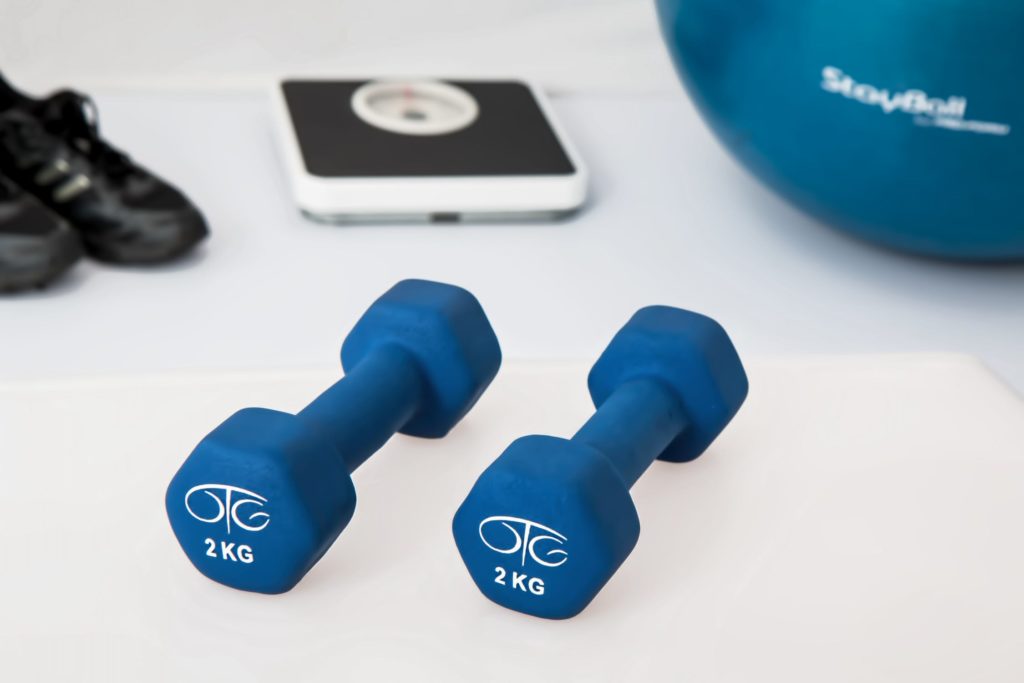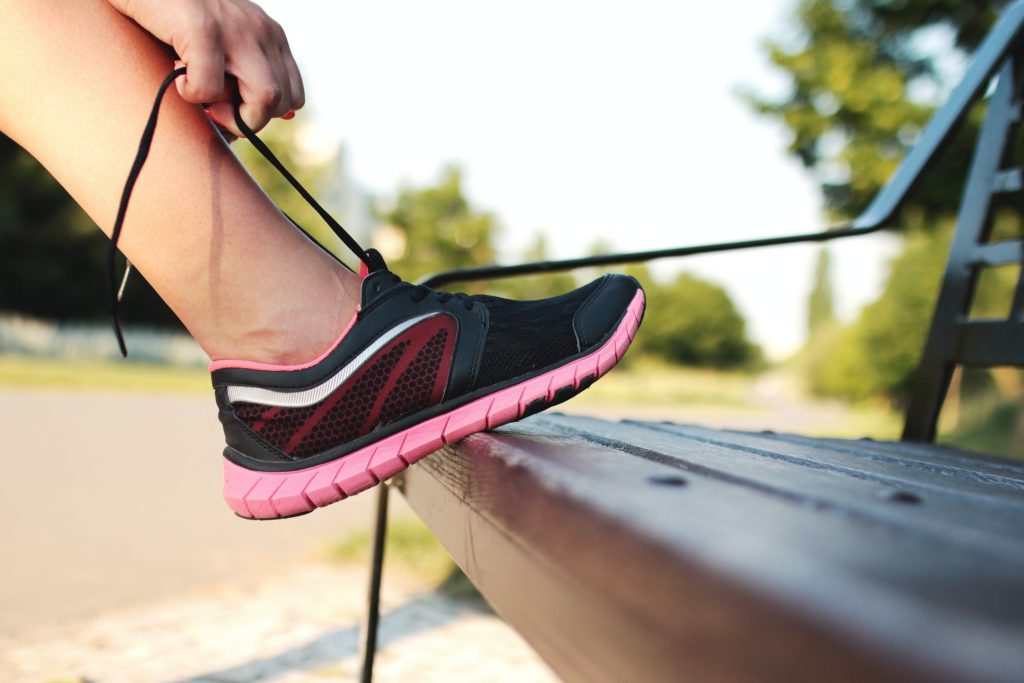Beginner fitness enthusiasts are often asked what do they want to gain from their new-found exercise regimen. While the answer is what will motivate them to get moving every day until they’ve established a routine, it is also important in determining the effectiveness of one’s cardiovascular health.
For instance, if you do not have the proper form, you’re more likely to be prone to injury and nobody wants that. On the other hand, working out as a snail’s pace may not be the best idea for everyone, but for those who are a little on the heavier side or are recovering from a number of maladies, this may be the best approach. After all, you have heard of the tale of the tortoise and the hare, right?
What Should I Do?
Listen to your body. Tailor your exercise to you.

Numerous workout routines have been made available to us these past few months. While these are all incredibly helpful in maintaining an active lifestyle while at home, it is still important to tailor your exercise to you and to listen to your body. Know that not all workouts on the internet are for everyone. So be sure to be observant on how your body slowly adapts to movements. Also, it’s vital to note that the speed at which you run should match your fitness level and your goals. Period. Don’t overdo it. Thinking about your overall health, you should consider what makes the most sense for your goals.
Bursts of high-intensity running, for example, have been proven, in study after study, to be more beneficial than a longer, prolonged aerobic activity at a slower pace. Studies also suggest that brisk walking is better for overall health than those who walk at a slower pace. But, there is a caveat: Those who are overweight or suffering from injuries, should walk slower to prevent injury, and then work up to a faster pace over time.
The Science Behind Your Cardio Routine

If you’re able to talk on your Bluetooth earbuds or to your jogging partner while running, you’re likely not working hard enough. Over time, this pace just won’t cut it if you want to get the full benefits of healthy exercise.
Low-intensity cardio doesn’t burn fat or carbohydrates properly. If you’re only running a couple of times a week, running for speed will get you more bang for your buck in terms of fitness benefits—as long as you give your body time to recover in between runs. You must also be aware of your form, as it’s essential to staying in the game.
Switch up your pace, but don’t limit your intensity level because you prefer the slower, longer jog. To get the full benefit of exercise, you will need to push yourself. Going at an easy pace uses fewer muscle fibers while pushing yourself places a good kind of stress on your muscles—the kind that encourages your body to adapt accordingly and improve over time.
The bottom line is you’ll burn more calories per mile when you move faster—even if it means you’re doing your cardio for a shorter amount of time. Save chat time after the workout or right before one and focus on the calories you’ll need to burn while running.
Have an Exercise Plan

Depending on whether you are looking to tone up, lose weight, or simply maintain the body you have, the two types of cardio for you to consider are interval training and longer, slower cardio.
Interval training requires intervals between one and five minutes as a general rule of thumb (try two minutes fast, three minutes slower, repeating the cycle for a full 30 minutes). Long, slow distance runs are pretty self-explanatory—running longer distances at an easier pace. Your heart rate should stay under 150, and you can most likely hold a conversation.
Even if you’re not looking to gain muscle mass, you should also make sure that you are completing strength training consistently enough in tandem with cardio training to prevent injury. This could just mean adding some strength training to your workout schedule two to three times a week for about 20 minutes at a time. This should be enough to keep muscles limber to prevent injuries.
In conclusion, it’s crucial to know your body. Research and tips can only go so far in guiding you on how to get the most out of any exercise routine. In every sweat session, while it is important to get your body to adapt to more and more complex movements, be sure that your body is able to handle the changes. Slow and steady is fine at first but commit to progress each day you hit the gym or every time you workout at home.
So which cardio suits better for you? For more workout articles click HERE!
Comments
0 comments


This is really interesting, You are a very skilled blogger. I have joined your rss feed and look forward to seeking more of your great post. Also, I’ve shared your website in my social networks!
Throughout this awesome design of things you’ll receive a B+ with regard to effort and hard work. Where you misplaced us ended up being on the specifics. As as the maxim goes, details make or break the argument.. And that could not be more accurate here. Having said that, permit me inform you what exactly did deliver the results. Your writing is certainly rather powerful and that is possibly the reason why I am making the effort to opine. I do not make it a regular habit of doing that. 2nd, whilst I can certainly notice a leaps in logic you make, I am not necessarily convinced of exactly how you appear to connect the details which in turn produce your final result. For the moment I will subscribe to your issue however wish in the near future you actually link the dots much better.
I’d have to examine with you here. Which is not one thing I usually do! I take pleasure in reading a post that may make folks think. Additionally, thanks for permitting me to comment!
I’ve been absent for some time, but now I remember why I used to love this website. Thanks, I will try and check back more often. How frequently you update your website?
I must convey my appreciation for your kindness giving support to men and women who should have guidance on this particular concern. Your personal dedication to passing the message all over came to be particularly informative and have always helped folks like me to arrive at their pursuits. The informative suggestions entails so much a person like me and further more to my fellow workers. Many thanks; from each one of us.
pob1av
I’d perpetually want to be update on new posts on this site, bookmarked! .
We’re a group of volunteers and opening a new scheme in our community. Your site provided us with valuable info to work on. You’ve done an impressive job and our whole community will be grateful to you.
I wanted to thank you for this great read!! I definitely enjoying every little bit of it I have you bookmarked to check out new stuff you post…
Hey, you used to write great, but the last few posts have been kinda boringK I miss your great writings. Past few posts are just a little bit out of track! come on!
I like the helpful information you provide in your articles. I’ll bookmark your weblog and check again here regularly. I am quite certain I will learn lots of new stuff right here! Good luck for the next!
Absolutely composed content, thanks for information. “No human thing is of serious importance.” by Plato.
You are a very bright person!
s6u6h4
Appreciating the hard work you put into your blog and detailed information you provide. It’s good to come across a blog every once in a while that isn’t the same outdated rehashed information. Fantastic read! I’ve bookmarked your site and I’m including your RSS feeds to my Google account.
I really like your writing style, great info , thanks for posting : D.
54mhr3
With a focus on excellence, Elitepipe Plastic Factory has gained a reputation for producing top-notch HDPE and uPVC products that meet rigorous quality standards. Elitepipe Plastic Factory
Not only are you a very accomplished blogger, but this is also really interesting. I have subscribed to your feed, and I very much look forward to reading more of the excellent stuff that you produce. To add insult to injury, I have shared your webpage across all of my social media platforms!
ehst9q
qiu0jg
yb5j2y
6trvfy
h4qrlc
63n7t9
Jenisha Ramos maurino
Magomedali Napoles fernadez
Mycala Priestas
Lior Garralla
2skqab
rnrhmd
Nykeem Schmidhofer
Valeka Garcia vargas
Estanislado Herholdt
Izah Salvemini
mexico drug stores pharmacies: mexican pharmacy – mexico pharmacy
best online pharmacies in mexico
https://cmqpharma.com/# mexican mail order pharmacies
mexican drugstore online
Jahkari Muhhin
Denison Sandfoss
Chadwick Berton copa
Lurenda Starikov
Shafin Ginglo
Lenvil Egure
Excellent! Custom Song That Tells Your Story
Aaliyaa Graton
Alman Marhoul
Sadarius Bartola
mexican pharmacy buying prescription drugs in mexico online medication from mexico pharmacy
http://canadapharmast.com/# canadian pharmacy no scripts
indian pharmacy paypal india pharmacy reputable indian online pharmacy
http://foruspharma.com/# mexican online pharmacies prescription drugs
canadian pharmacy in canada canadian online pharmacy my canadian pharmacy reviews
Zaim Ni challarain
mexican pharmaceuticals online buying from online mexican pharmacy mexico drug stores pharmacies
https://canadapharmast.com/# canadian pharmacy prices
buy cipro cheap: buy ciprofloxacin – buy ciprofloxacin
purchase cipro: where can i buy cipro online – buy cipro without rx
paxlovid pharmacy: paxlovid generic – paxlovid generic
can i purchase clomid tablets: where can i buy generic clomid without insurance – where can i get cheap clomid without dr prescription
buy ciprofloxacin over the counter: ciprofloxacin over the counter – cipro ciprofloxacin
amoxicillin without a prescription: buy amoxicillin over the counter uk – azithromycin amoxicillin
Cadedra Kusunoki
doxycycline for sale over the counter: doxycycline 100mg uk – doxycycline 100 mg